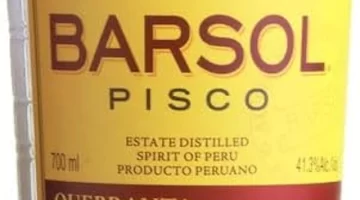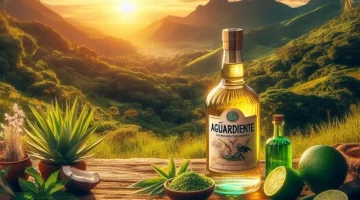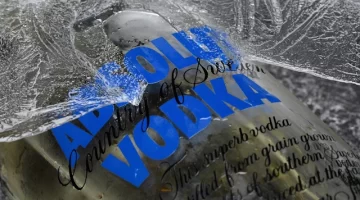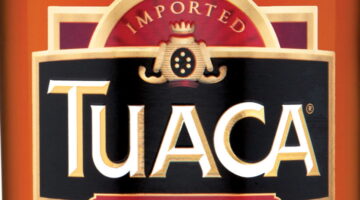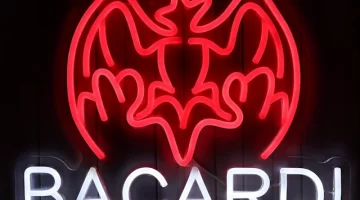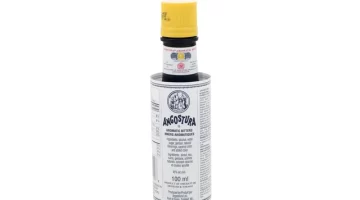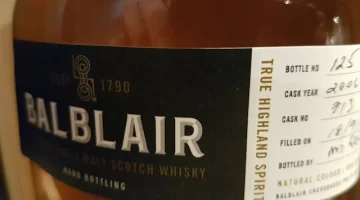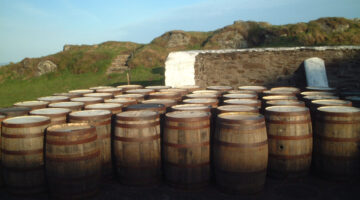Types of Tequila
Mike Gerrard of Travel Distilled explains the different types of tequila: blanco, reposado, anejo, extra anejo mixto, and joven or blended tequilas.
As with any other spirit, there are several types of tequila. There are different styles that might suit different palates, some that are better for sipping and some that are better for mixing in cocktails.

So if you tried a tequila once and didn’t like it, don’t let that be the end of it. If your only experience of tequila was slamming shots as a student, it’s time to go beyond that. Get down to the tequila shelves at the liquor store or grocery store, browse around and try a different one. Tequilas are as varied and can be as subtle as scotch or bourbon.

Types of Tequila: 100% Blue Agave
As explained in Mexican Spirits 101, the best tequilas are 100% blue agave. If it doesn’t say that on the label then you know it’s not 100% blue agave. It’s more likely to be 51% blue agave, which is the legal minimum for it to be able to be called tequila, and the other 49% can be any other kind of sugar, even corn syrup. And no-one wants to be drinking too much corn syrup.
Save those tequilas for when you’re mixing up a bucketful of margaritas for a party, and even then a better tequila will make for a better margarita. These tequilas are called mixtos, so just remember that mixtos are for mixing.
Types of Tequila: Blanco
The 100% blue agave question applies to all types of tequila, whether it’s aged or unaged or whatever else it says on the label. All tequila starts life as blanco, or silver tequila. That’s the way it comes out of the stills, and it has to be from 38-55% ABV. Some drinkers prefer blanco as it’s the closest to the flavor of the blue agave. Others prefer aged tequilas. One isn’t better than the other, it is purely personal preference.
So blanco is an unaged tequila, which is bottled immediately after distillation. Some distillers do age their blancos for a short time to get the flavor profile they want. Blanco can’t be aged for more than two months, though, as then it moves into the next category, which is reposado.

Types of Tequila: Reposado
Reposado means ‘rested’, and reposado tequila is tequila that has been rested for 2-12 months in oak barrels. Just as with whiskey and bourbon, the barrels give color and flavor to the original blanco tequila, and reposado is the style that is most popular in Mexico itself.
Some distillers will leave their tequila in the barrel for two months and no more, either to get it onto the market more quickly or because they like the minimal ageing process. Others will go the full twelve months, because that’s the taste the Master Distiller wants.
Obviously there is a difference between a tequila aged for two months and one aged for twelve months. Another variance is that the barrels can either be new or can be used, so maybe have previously had whiskey or even wine in them, so this is where differences really start to emerge.

Types of Tequila: Añejo
Once it’s gone over twelve months in oak barrels – and these things are legally monitored to the day – the reposado becomes officially añejo, or aged tequila. Aged tequila can be aged for anything from 1-3 years. It can remain in the same barrels, it can be moved into different barrels (e.g. from a new barrel into a former whiskey barrel), or it can be put into stainless steel containers to reduce evaporation, that phenomenon known as the angels’ share.
It’s now easy to see why there’s so much variation in the flavor of tequila, even within the different styles. One añejo might have spent a year and a day in a new oak barrel, while another might have spent the full three years in an ex-whiskey barrel, or in an ex-wine barrel, or a combination of different barrels. And then there’s the next category!
Types of Tequila: Extra Añejo
When what started off as blanco or silver tequila has been aged for three years and a day in oak barrels, it becomes extra añejo, or extra aged tequila. So if you put your añejo into stainless steel containers it cannot become extra añejo. There’s no upper limit on the ageing process, it’s purely down to the Master Distiller to decide when the tequila is at its peak.
Blended Tequilas
As if this didn’t offer enough variety, you can also blend tequilas. If you blend blanco with reposado then you have a joven (young) tequila, a combination of new and rested tequilas.
So you now need to go out and buy one of each type of tequila for research purposes, to discover which you prefer, and then you dig down deeper and try different brands. And as they say in Mexico: salud!
You can find a wide range of tequilas and other Mexican spirits at Caskers.
All photos (c) Mike Gerrard for Travel Distilled.
You can find a wide range of tequilas and other Mexican spirits at Caskers.
All photos (c) Mike Gerrard for Travel Distilled.


